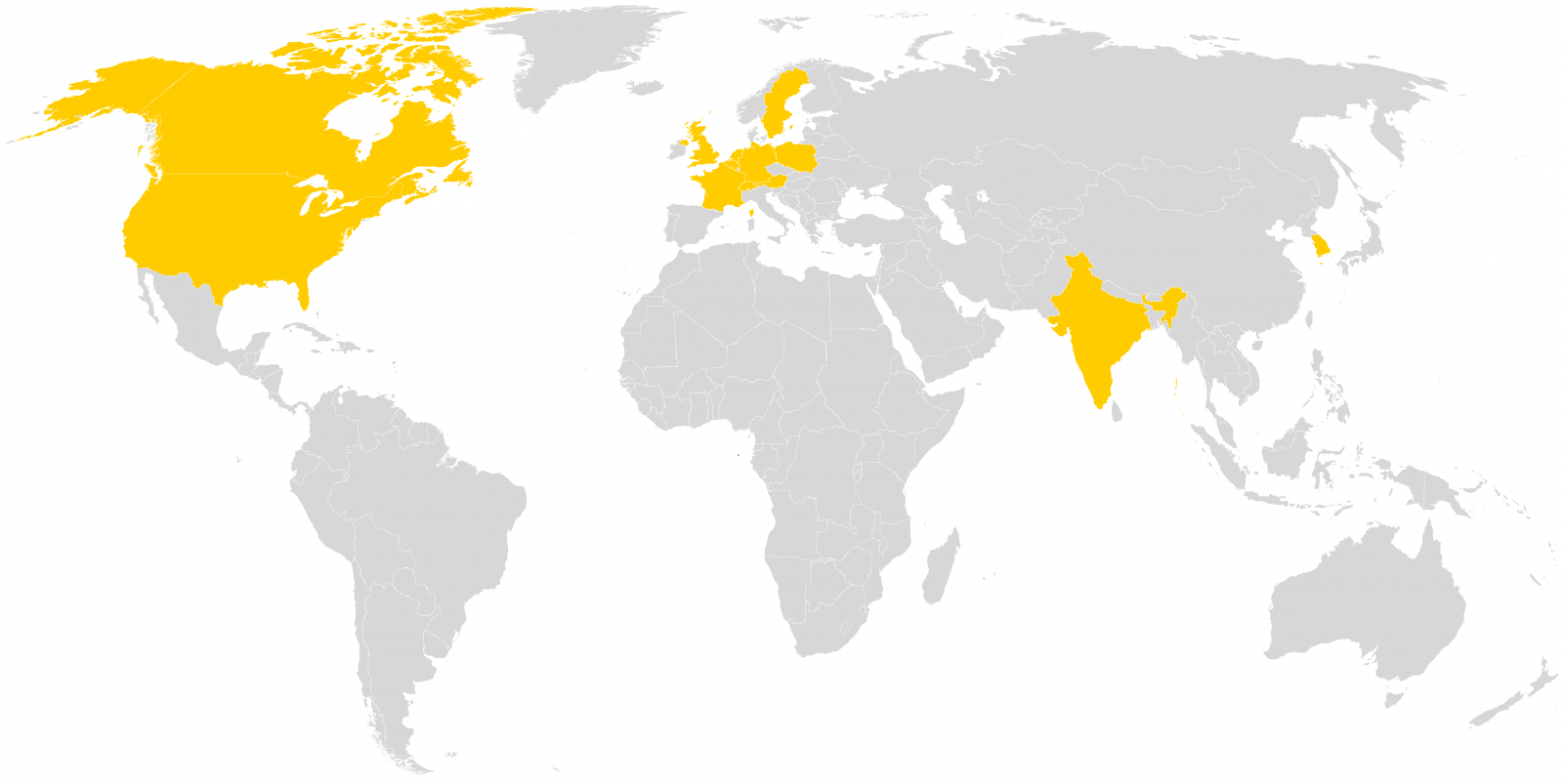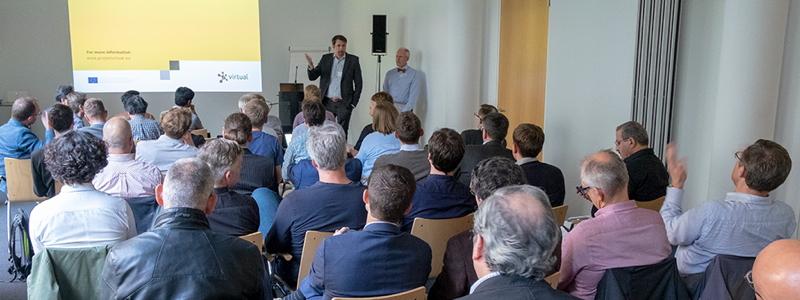On 17 October 2018, VIRTUAL hosted an inspiring session on Open Source Human Body Model Development at the Wissenschaftsforum-building in Berlin. The workshop attracted over 40 international experts on human body modeling.
The VIRTUAL workshop was organised in conjunction with the CARHS 7th International Symposium on “Human Modeling and Simulation in Automotive Engineering” taking place in Berlin on 18 and 19 October.
Expert insights
Five external experts were invited to give a short presentation on their experience on a selected subtopic.
Philippe Petit (Renault) gave some very important insights on HBM-scaling as well as on Open Source (OS) dissemination. A vital takeaway message was to ensure that we communicate with, and involve the PIPER consortium to ensure that we get the best out of the models and tools that are available and at the same time contribute to the Piper Community and do our best to avoid so called “forking” of the OS tools.
Duane Cronin (University of Waterloo) gave us valuable insights and elaborated on various forms of modularity that have been used. One takeaway message was that the type of modularity must be chosen based on the purpose of the given model or the given simulation case.
Steffen Peldschus (University of Munich/LMU) gave a presentation on Harmonised Objective Validation of human body models. The THUMS users community makes validation data available for a set of different load cases.
John Combest presented his view on Complex versus Simple HBMs, as well as a range of additional input, based on the experience in the GHBMC consortium. The GHBMC approach was to start from a detailed HBM and then also develop a simplified version where the occupant kinematics was in more focus. Future use of HBMs may vary over time. A new trend is the interest in novel seating positions and postures that may come as a result of vehicle automation.
Hyung Yun Choi shared his experience on translation of HBMs between different codes. One of his conclusions was that, if you want to develop an HBM that is prepared for translation into other codes, your model should be based on features that are common for the different codes.
In the final discussion we received a range of valuable advice and comments. University representatives were very grateful for our open source approach that provides them with easily accessible models that can be used in student projects.
Mats Svensson (Professor at Chalmers University of Technology), moderator of the workshop, gave an overview of the VIRTUAL project and presented the challenges we face today. Mats pointed out that the overall goal of the VIRTUAL project is to investigate the feasibility of virtual test procedures complementary to physical testing. VIRTUAL has picked a few well confined use cases, for instance whiplash injury, and it is only in those few cases that the biofidelity and injury assessment capability of the VIVA-HBM (addressing gender diversity) will be given priority.
We thank all presenters and attendees for their interest in the VIRTUAL project and for sharing their insights during the workshop.
Read the minutes of meeting »
Join our online community to exchange knowledge, follow us on Twitter and subscribe to the VIRTUAL newsletter to stay fully informed on the project’s proceedings.

——————————————
About VIRTUAL
VIRTUAL aims to create a versatile basic model that allows for future refinements in an open source environment – which stakeholders from all over the world are welcome to use – to further develop the HBM. In parallel VIRTUAL will create a sustainable web-based platform where the HBMs can be freely downloaded.
VIRTUAL encourages users to share their experience, model refinements and advice with the online community. Our long term goal is that we, together with the stakeholders, will jointly provide a HBM that can be morphed/scaled and is therefore suitable to represent any human length, gender, age, BMI, posture etc. The HBM will be divided into sections which allows users to refine one body section and then attach it to the full HBM.
HBM – Human Body Model
In passive safety, advanced Human Body Models for injury prediction based on the FE method, have the potential to represent the population variability and to provide more accurate injury predictions than alternatives using global injury criteria.
The virtual HBM is a Finite Element (FE) computational model of the human body designed to replicate its biomechanics and kinematics in a variety of scenarios.
These advanced HBMs are underutilized in industrial R&D. Reasons include difficulties to position the models – which are typically only available in one posture – in actual vehicle environments, and the lack of model families to represent the population variability.
THUMS
Total Human Model for Safety (THUMS) is a human FE model jointly developed by Toyota Motor Corporation and Toyota Central R&D Labs., Inc. The model aims to simulate human body kinematics and injury responses in car crashes. The geometries of the human body parts are represented by FE meshes. Their material properties refer the list in papers or documents and are compared with component tests listed in papers or documents for validation.

